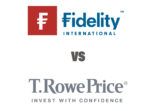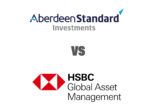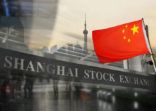China, Japan and India, the region’s growth engines, also have governments that aim to drive through key structural reforms, which would support economic growth.
Against this backdrop, we take a look at Schroder ISF Asian Opportunities and Templeton Asian Growth, which aim to offer long-term capital appreciation by investing in Asia ex-Japan markets.
Both of the Luxembourg-domiciled vehicles have a long track record with the Schroders fund being in existence since 1993 and the Templeton one since 1991.
Germaine Share, manager and research analyst with Morningstar Investment Management Asia, offered her insights on the two funds.
Investment strategy review
According to Share, both funds use a bottom-up stock selection process, following a buy-and-hold approach, which results in low turnover rate.
“Schroders favours stocks that are able to generate returns on investment capital [ROIC] that exceed their weighted average cost of capital [WACC], or those with ROIC currently below WACC but are trending toward a positive spread.”
The top holdings in the Schroders portfolio includes names like Taiwan Semiconductor Manufacturing, AIA Group and Jardine Matheson Holdings.
“Templeton invests in stocks that appear cheap relative to their five-year projected earnings,” Share said.
The top stock picks of the Templeton fund are Siam Commercial Bank, Tata Consultancy Services and Brilliance China Automotive Holdings.
As of 31 October, the top 10 companies in the Schroders fund represented 34.8% of its assets while the Templeton fund had a larger concentration ratio with its top 10 picks accounting for nearly 52% of the fund’s assets.
The Schroders fund had total of 61 holdings in its portfolio compared to 47 of the Templeton fund. Schroders had less cash levels (1.6%) than Templeton, which held about 6.4% of its assets in cash.
Something to note is Templeton Asian Growth’s fund size, Share said.
“At $12.9bn (as of 31 October), the fund is by far the largest in the category and this may at times hinder the manager’s ability to invest in attractive small- and mid-cap opportunities.”
Incidentally, the latest fact sheet of the $2.9bn Schroders fund shows it has made investments in other funds such as Schroders ISF Asian Smaller Companies Fund (3.4% weighting) and Schroder ISF Indian Opportunities Fund (3.2%).
In terms of country allocation, Schroders had the highest allocations to Hong Kong/China, Taiwan and India.
Schroders fund was overweight on Hong Kong/China with a 41.7% weighting compared to 38.1% weighting of the country in MSCI AC Asia ex-Japan, its benchmark index. The fund is also overweight on India with a 12.5% allocation compared to 9.2% representation of the country in the index.
In regards to the Templeton fund, the manager had a major overweight position in Thailand with a 29.3% weighting compared to about 3% that the country gets in the benchmark index, which is the same index the Schroders fund uses.
Like Schroders, the Templeton fund is also overweight India with a 20.7% allocation, but is underweight China (22.3% compared to a 25.3% weighting in the index).
The top sector allocations of the Schroders fund are in the financial, information technology and consumer discretionary sectors. Financial and consumer discretionary companies featured as the top sector picks of the Templeton Fund as well, along with exposure to the energy sector.
Performance review
As of 30 November 2014, the Schroder ISF Asian Opportunities fund posted a three-year annualised return of 11.9%, outpacing the MSCI AC ex-Japan index by 114 basis points and ranking in the 23rd percentile among Asia ex-Japan equity peers, noted Share.
Conversely, the Templeton Asian Growth fund gained 4.7% over the same period, lagging the index by 600bps and ranking in the 95th percentile among peers.
However, the Templeton fund’s long-term performance was more impressive.
In terms of calendar year returns, the Schroders fund declined by 12% in 2011 whereas the returns of Templeton fund fell by 14.9%.
Even in 2013 when the global markets suffered due to the tapering of US quantitative easing, the Schroders fund recorded a positive 0.8% return whereas the Templeton fund gave a negative 7.8% return.
“2011 was quite a tough year for equities and the Schroders fund performed well. So it seems to offer better downside protection than the Templeton fund,” she added.
Portfolio managers

Robin Parbrook, head of Asia ex-Japan equities took charge of the Schroder ISF Asian Opportunities in October 2010. Parbrook started his investment careers with Schroders in 1990.
According to Share, Parbrook leads an experienced and stable team of around 30 portfolio managers and analysts.
He also co-manages with King Fuei Lee, the flagship Schroder ISF Asian Total Return fund which has a laudable track record, she said.

Templeton Asian Growth’s named manager is Mark Mobius, a pioneer in emerging markets investing with more than 40 years of experience.
“As head of the Templeton emerging markets team, Mobius mainly oversees the team and investment process. Day-to-day management of the fund lies in the hands of Allan Lam, who has been the key decision-maker here for more than 15 years,” Share said.
Lam joined the firm in 1987 and is one of the most experienced and longest-tenured managers in the team. He is supported by a team of 51 portfolio managers and analysts in 18 offices across the globe.
“Lam is also in charge of other strategies, including Templeton Emerging Markets and Templeton Frontier Markets, which have delivered mixed results since their inception.”
Fees

The A share class of the Schroders fund has an ongoing charge of 1.95%, whereas the A share class of the Templeton fund has an ongoing charge of 2.22%. This compares to a category median of 2.00%.
Both the funds charge a similar 5% subscription fees.
Conclusion

Share pointed out that differences in the fund managers’ track records on other funds they manage are a factor to consider. Robin Parbrook has a strong performance record on other funds, such as the Schroder ISF Asian Total Return Fund, she said.
Templeton’s Allan Lam has an impressive track record on the Asian Growth Fund, but performance of the other funds he manages is more mixed, she added.
Morningstar has a silver rating on the Schroders fund and neutral one on the Templeton vehicle.
Taking into consideration the ratings, Share preferred the Schroders fund due to its relative performance and favorable expense structure over the Templeton fund.






















